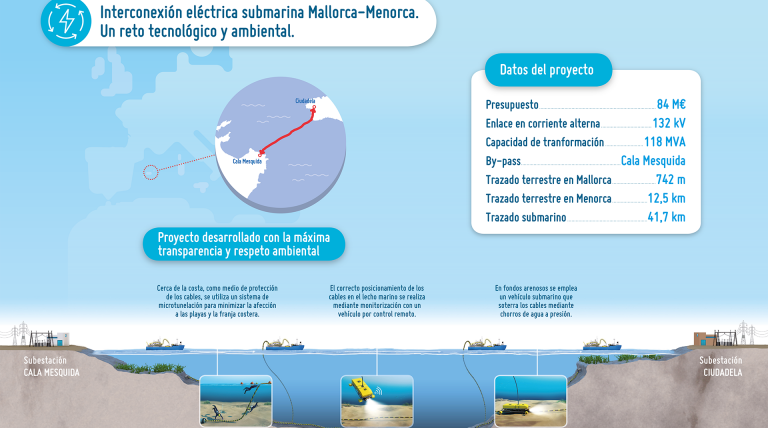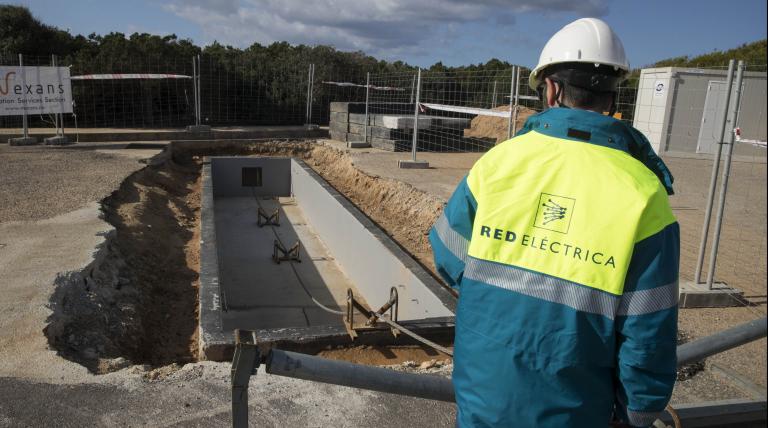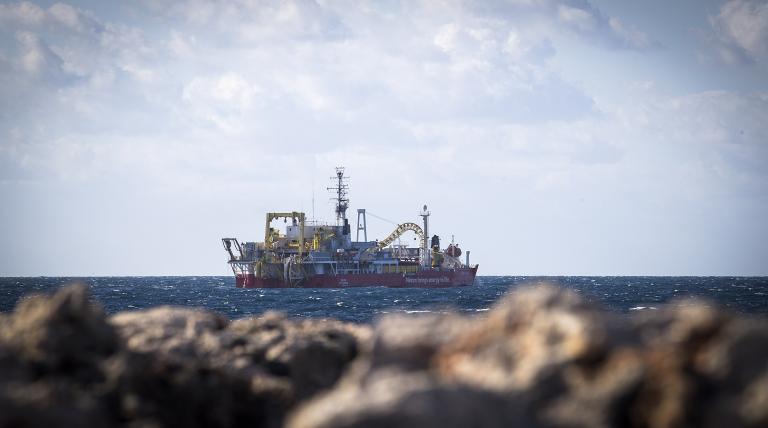We are a global operator of essential infrastructure
- The Company completed the various phases of the project execution within an 18-month period
- As it was declared an essential infrastructure for the electricity system, construction work continued during the state of emergency
- The link bolsters the security, stability and quality of Menorca's electricity supply
After completing the necessary protocols prior to its commissioning and passing the various tests and trials carried out, the submarine electricity interconnection between Menorca and Majorca has come into operation. Red Eléctrica de España (REE) has therefore successfully completed the electricity interconnection between the islands that make up of the Balearic archipelago and thus connects the entire Balearic electricity system with the Spanish mainland and the European transmission grid. The commissioning of this link makes an essential contribution to bolstering the security, stability and quality of Menorca's electricity supply.
The commissioning of the link is the result of uninterrupted work ever since the Council of Ministers declared its public utility on 2 November 2018 and granted the administrative authorisation for its construction. Thus, in a period of 18 months, Red Eléctrica de España has completed the various phases of the project execution, entailing not only the management of the tendering process, to award and the installation the cable but also the execution of the underwater cable laying and subsequent protection work of the link by burying the cable on the seabed in order to maximise the integrity and safety of the infrastructure. In parallel, throughout this period, the tasks associated with the land-based section of the routes of the link and the enlargement of the Cala Mesquida substation in Majorca and the Ciutadella substation in Menorca were also carried out.
In these last months, the work associated with the final phase of the link actually continued during the period associated with the state of emergency declared by the Government as a result of the COVID-19 pandemic; a period during which restrictions were imposed on all activities. This was possible due to the fact that the competent authorities declared this link as essential infrastructure for the electricity system. The efforts made by Red Eléctrica de España, in coordination with various state, regional and local public administrations, as well as with the state security forces, enabled the agreed project deadlines to be brought forward in spite of the exceptional nature of the world health emergency.
After its commissioning, the infrastructure will be presented to the general public of the Balearic Islands at an official ceremony to be held in July in Menorca, which will be attended by representatives of Red Eléctrica, the Ministry of Ecological Transition and the Demographic Challenge, the regional government of the Balearic Islands and the other public administrations involved.
Red Eléctrica’s Chairwoman, Beatriz Corredor, said that "we are very satisfied with all the work carried out to make this infrastructure available to the people of Menorca at such an important time as this, a link which will decisively improve the security and quality of the electricity supply in Menorca, and will act as a lever for the economic recovery of the archipelago, thus promoting the energy transition process of the Balearic Islands".
The Fourth Vice President of the Spanish Government and Minister for the Ecological Transition and the Demographic Challenge, Ms. Teresa Ribera, highlighted that "the commissioning of the new interconnection between Majorca and Menorca is excellent news. The agreement and the joint work of the regional administration, the General State Administration and Red Eléctrica have enabled the cable link, a project of great technical complexity, to meet all the set deadlines. This interconnection will make it possible to significantly improve the security of supply in Menorca and increase the resilience of its electricity system when faced with unforeseen and extreme events such as the one occurred in October 2018. Phenomena that, due to climate change, will occur more and more frequently. The new interconnection also means a step forward along the path towards the energy transition in the Balearic Islands and towards its complete decarbonisation, by promoting the integration of renewable energy".
For his part, the Vice President of the Regional Government of the Balearic Islands, Mr. Juan Pedro Yllanes, stressed that "for the Ministry of Energy Transition and Productive Sectors it has always been a priority to guarantee the electricity supply in Menorca. The citizens of Menorca deserve equality in energy matters, something which is now possible as a result of the commissioning of the cable. The interconnection of all the islands with the peninsular system is great news, and now, it is time to continue promoting renewable energy in order to supply the citizens with increasingly clean energy".
Cutting-edge technology
With an investment of €84 million, this interconnection will play a substantial role in the energy transition process planned for Menorca and for all the Balearic Islands by facilitating greater efficiency in the management of the island's electricity system, maximising the integration of renewable energy, both existing and future, under safe conditions and that will allow a reduction of CO2 emissions.
The link is comprised of a three-core 132 kV submarine-underground cable, weighing about 2,300 tonnes (56.5 kg per metre) which connects the substations of Ciudadela and Cala Mesquida, in Menorca and Majorca, respectively. The underwater route is 41.7 km in length, running at a maximum depth of 86 metres, and the land-based route runs for 12.5 km in Menorca and 742 metres in Majorca. The land sections of the link on both islands are buried underground.
The shore landing points at both ends of the link are carried out by means of horizontal directional drilling, a technique that allows the installation of an underground conduit with absolute control. In this way, it is possible to avoid the obstacles posed by the terrain and guarantee the minimum environmental impact, especially by safeguarding Posidonia Oceanica and other phanerogam meadows that are present in both coastal.
In the case of Cala en Bosc, the section for which horizontal directional drilling was used has a total length of 310 metres with a maximum depth of 25 metres, while in the case of Cala Mesquida, it is has a length 800 metres long, with an underwater route that runs at a maximum depth of 20 metres and a land-based section of 276 metres under the beach.

















